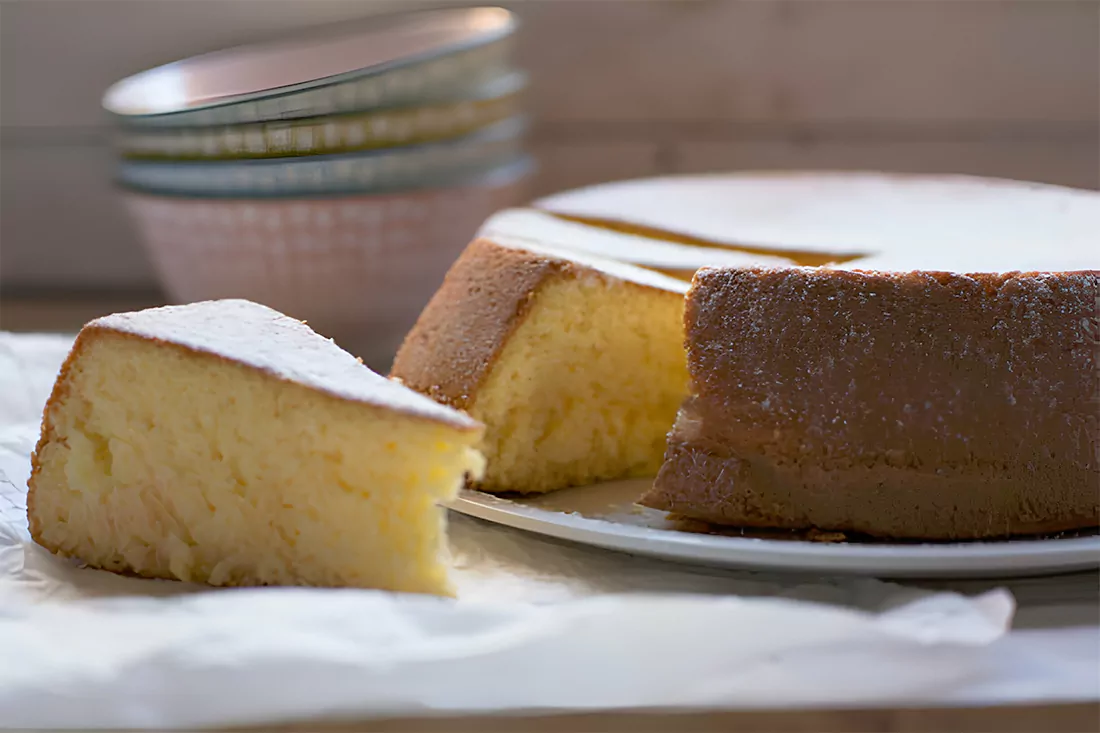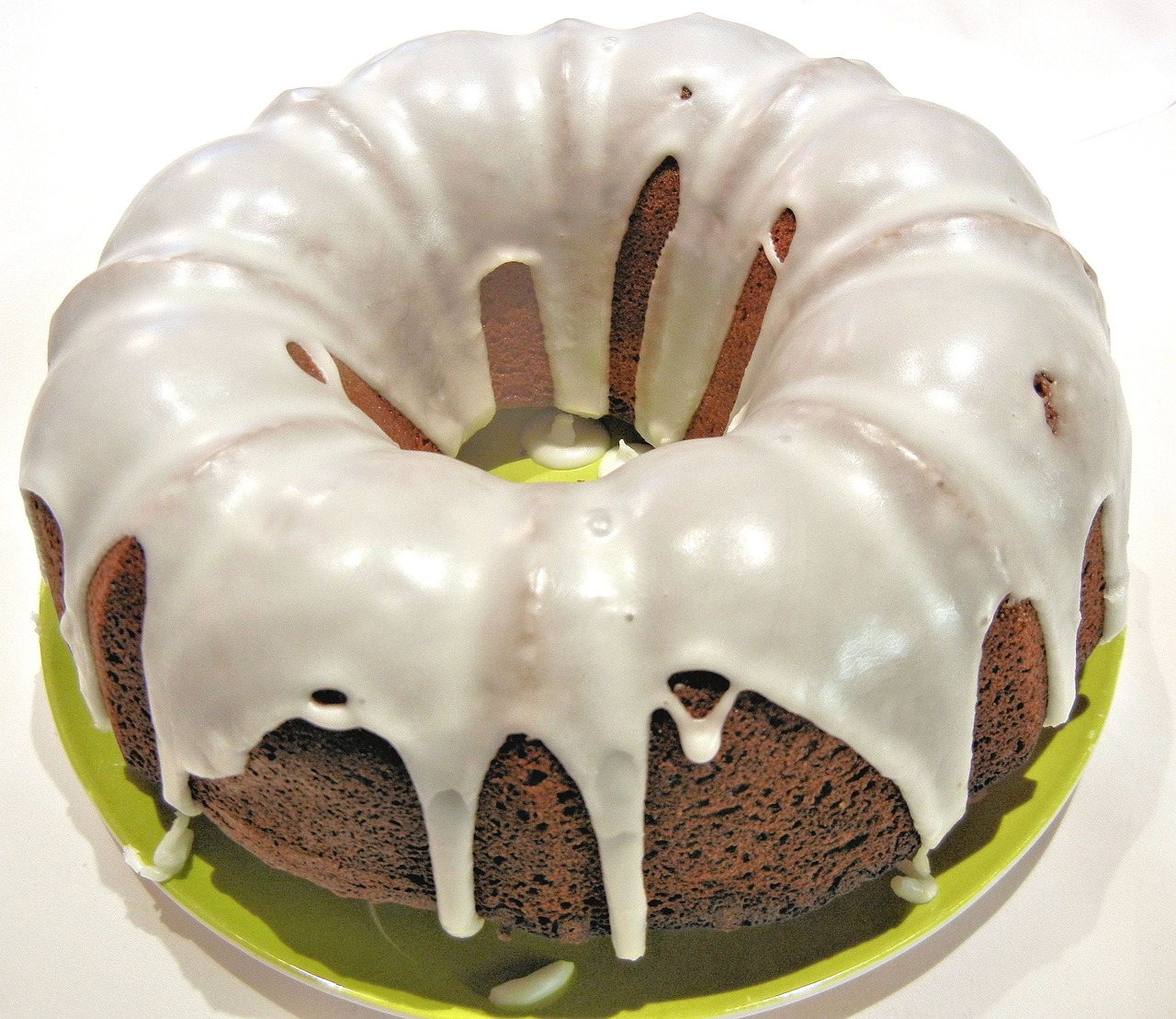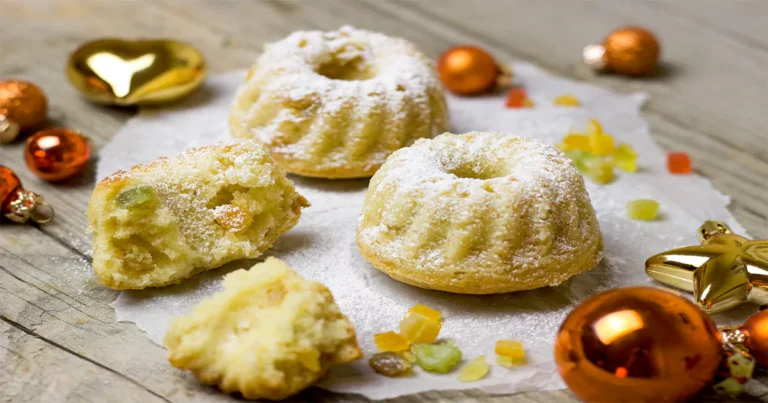In the enchanting world of baking, the Bundt cake stands out as a delightful exception to conventional cakes. With its unique shape, dense texture, and decorative flair, it’s more than just a dessert – it’s a centerpiece that tells a story. This article delves into the heart of what makes a Bundt cake distinct, exploring everything from its history and design to baking techniques and creative decorations. So, let’s embark on this sweet journey and uncover the secrets behind the charm of Bundt cakes.
Introduction to Bundt Cakes
What is a Bundt Cake?
Ah, the Bundt cake – a name that evokes images of family gatherings and festive celebrations. But what exactly is a Bundt cake? Originating from the German word bundkuchen, which translates to “a cake for gatherings,” the Bundt cake is more than just a treat; it’s a symbol of togetherness.
These cakes are known for their distinctive ring shape, achieved by baking in a specially designed Bundt pan. Unlike your typical sheet or layer cakes, Bundt cakes boast intricate designs, thanks to the fluted sides of the pan. They’re often compared to coffee cakes or pound cakes but stand out due to their decorative appearance.
The Bundt cake’s history is as rich as its flavor. It’s a tale of immigration, innovation, and celebration. Brought to the American Midwest by German immigrants, the Bundt cake quickly became a staple at social gatherings, winning hearts with its simple yet elegant design.
But it’s not just about looks. Bundt cakes are known for their dense, moist texture, making them a hearty option for dessert lovers. This texture is crucial, as it ensures the cake holds its shape and intricate design during and after baking.
In essence, a Bundt cake is a perfect blend of tradition, art, and flavor. It’s a testament to how a simple change in shape and design can transform a regular cake into something extraordinary. As we slice through the layers of what makes a Bundt cake special, we’ll discover the nuances of its pan, the secrets of its recipes, and the art of making it just right. So, let’s turn the page and dive deeper into the world of Bundt cakes, where every curve and crevice tells a story of culinary creativity.
The Bundt Cake Pan: More Than Just a Mold
The Role of the Bundt Cake Pan in Baking
The Bundt cake pan isn’t just a baking tool; it’s the heart and soul of the Bundt cake’s identity. This unique pan is what gives the Bundt cake its signature ring shape and intricate designs. But there’s more to it than just aesthetics.
Design and Material Variations
Bundt pans come in a variety of designs and materials, each adding its own flair to the final product. The classic aluminum Bundt pan is a popular choice, known for its even heat distribution, ensuring a perfectly baked cake every time. On the other hand, silicone Bundt pans offer flexibility and non-stick properties, making cake release a breeze.
The design of the pan plays a crucial role in the cake’s final appearance. From elegant swirls to bold grooves, the pan’s fluted sides create a visually stunning cake that requires little to no additional decoration. It’s a testament to the saying, “beauty lies in simplicity.”
Impact of the Pan on Cake Texture and Cooking Time
But the Bundt pan’s influence extends beyond beauty. Its design significantly impacts the cake’s texture and cooking time. The central tube of the Bundt pan allows heat to circulate more evenly, cooking the cake from the inside out. This results in a moist, evenly baked cake with a slightly crispy exterior – a texture that’s hard to achieve with regular cake pans.
Moreover, the pan’s design means more of the cake’s surface is exposed to heat, creating a delightful contrast between the soft interior and the slightly firmer crust. It’s this unique texture that sets Bundt cakes apart from their regular counterparts.
In summary, the Bundt cake pan is more than just a mold; it’s a key player in the art of Bundt cake baking. Its design and material not only shape the cake’s appearance but also influence its texture and taste. As we delve further into the nuances of Bundt cake baking, we’ll discover how these elements come together to create a dessert that’s as pleasing to the eye as it is to the palate.
Comparing Bundt Cakes with Regular Cakes
What Sets Bundt Cakes Apart from Regular Cakes?
When it comes to distinguishing Bundt cakes from their regular counterparts, the differences go beyond the pan. Let’s delve into what really sets them apart.

Ingredients and Recipe Adaptations
Bundt cakes require a specific type of batter. The key? Moisture. Due to the larger surface area exposed to heat, Bundt cake recipes often call for more moisture-rich ingredients. This could mean adding sour cream, buttermilk, or extra butter to ensure the cake stays moist and tender throughout the baking process.
Regular cakes, on the other hand, might not need such adjustments. Layer cakes, for instance, often rely on a lighter, airier batter that rises easily in a standard cake pan but might not withstand the dense environment of a Bundt pan.
Texture and Density Differences
Texture is another defining feature. Bundt cakes are typically denser and richer than regular cakes. This density is not just a matter of taste but a necessity. The intricate designs of Bundt pans require a batter that can hold its shape and detail, something a lighter sponge or chiffon cake might struggle with.
In contrast, regular cakes, especially sponge cakes, are prized for their light, airy texture. They’re designed to be soft and fluffy, which works beautifully in a layered format but might not translate well to the structured demands of a Bundt pan.
In essence, while regular cakes are celebrated for their versatility and range of textures, Bundt cakes are loved for their moist, dense consistency and decorative appeal. Each has its place in the world of baking, offering different experiences in both preparation and enjoyment.
For those interested in diving deeper into the variety and versatility of Bundt cakes, Everything You Need to Know About Bundt Cakes offers a comprehensive overview.
As we continue our exploration, we’ll uncover the secrets to baking the perfect Bundt cake, ensuring that every slice is as delightful as it is beautiful.
Baking the Perfect Bundt Cake
Mastering the Art of Bundt Cake Baking
Baking a Bundt cake is an adventure in itself. It’s about striking the perfect balance between art and science. Let’s walk through the essential steps to ensure your Bundt cake is nothing short of perfection.

Essential Steps in the Baking Process
-
Creaming Butter and Sugar: This step is crucial. Using a hand or stand mixer, cream the butter and sugar for at least five minutes. This process incorporates air and gives the cake its light, yet dense texture.
-
Adding Eggs: Add eggs one at a time, ensuring each is fully incorporated before adding the next. Room temperature eggs are best as they emulsify more easily, contributing to a smoother batter.
-
Alternating Dry and Wet Ingredients: Add the dry ingredients and wet ingredients alternately to the batter, starting and ending with the dry ingredients. This method prevents the batter from becoming too heavy or too light, maintaining the perfect consistency for a Bundt cake.
-
Folding in Extras: If your recipe calls for mix-ins like nuts, fruits, or chocolate chips, coat them lightly in flour before folding them into the batter. This trick helps distribute them evenly throughout the cake.
-
Baking: Bundt cakes usually require a longer baking time due to their density. A good rule of thumb is to start checking for doneness after 45 minutes using a toothpick or skewer.
For a festive twist, try the Gingerbread Bundt Cake recipe from our collection
Tips for Ensuring a Successful Bundt Cake
- Proper Greasing: Grease every nook and cranny of your Bundt pan. This ensures the cake will release smoothly and maintain its beautiful design.
- Avoid Overmixing: Mix just until the ingredients are combined. Overmixing can lead to a tough cake.
- Cooling: Let the cake cool in the pan for about 10 minutes before inverting it. This allows the cake to set and reduces the risk of breaking.
Baking a Bundt cake is an art that rewards patience and attention to detail. With these tips in hand, you’re well on your way to creating a Bundt masterpiece that’s as delicious as it is beautiful.
In the next part, we’ll explore the creative world of Bundt cake decorations and variations, where the possibilities are as endless as your imagination.
Creative Decorations and Variations
Decorating and Personalizing Your Bundt Cake
The beauty of a Bundt cake lies in its versatility. Whether you’re a fan of classic designs or bold, innovative decorations, there’s a world of possibilities to explore.
Simple Yet Elegant Decoration Ideas
A Bundt cake’s intricate design often means it doesn’t need elaborate decoration. A dusting of confectioners’ sugar or a drizzle of glaze can enhance its elegance without overshadowing its natural charm. For a glaze, simply mix powdered sugar with a little milk or citrus juice until you get a pourable consistency. Drizzle it over the cake for a touch of sweetness and a visually appealing finish.
Exploring Different Flavors and Add-Ins
The flavor possibilities with Bundt cakes are endless. From the richness of a chocolate or red velvet Bundt to the zesty tang of a lemon or orange cake, you can tailor the flavors to suit any occasion or preference. Don’t shy away from experimenting with add-ins like nuts, fruits, or even a swirl of jam for a surprise burst of flavor.
Seasonal ingredients can also play a significant role in your Bundt cake variations. Think pumpkin spice for fall, fresh berries for summer, or peppermint for a festive winter treat. Each season brings its own unique flavors to the table, making Bundt cakes a year-round delight.
In essence, decorating and flavoring a Bundt cake is an opportunity to let your creativity shine. Whether you keep it simple or go all out with your decorations and flavor combinations, the result is sure to be a showstopper.
FAQs About Bundt Cakes
Frequently Asked Questions

Bundt cakes, with their unique charm and delicious flavors, often bring up intriguing questions. Here are some common queries answered to help you perfect your Bundt cake baking skills.
-
Can I Use a Regular Cake Recipe in a Bundt Pan? Yes, you can! However, remember that Bundt pans require a denser batter. If using a lighter cake recipe, like for a sponge cake, be mindful that the texture and baking time may vary.
-
How Do I Prevent My Bundt Cake from Sticking to the Pan? Thoroughly grease the pan with butter or non-stick spray, making sure to get into all the crevices. Dusting the greased pan with flour or using a non-stick baking spray with flour can also help.
-
Why Did My Bundt Cake Come Out Dry? This could be due to overbaking or not enough moisture in the batter. Ensure your recipe has adequate moist ingredients like butter, oil, or sour cream, and keep an eye on the baking time.
-
Can Bundt Cakes Be Frozen? Absolutely! Bundt cakes freeze beautifully. Cool the cake completely, wrap it tightly in plastic wrap, and then in foil. It can be frozen for up to 3 months. Thaw at room temperature before serving.
-
How Do I Make My Bundt Cake More Moist? Incorporate ingredients like yogurt, sour cream, or buttermilk into your batter. These add moisture and richness to the cake.
-
What’s the Best Way to Serve a Bundt Cake? Bundt cakes are stunning on their own and can be served simply with a dusting of powdered sugar or a glaze. For a more decadent treat, serve with a side of whipped cream or fresh fruit.
With these FAQs in your baking arsenal, you’re well-equipped to tackle any Bundt cake challenge that comes your way. Remember, baking is as much about the journey as it is about the destination. So, enjoy the process and savor the delicious results!
Conclusion and Final Thoughts
As we come to the end of our delightful journey through the world of Bundt cakes, it’s clear that these charming desserts are more than just a treat for the taste buds. They are a fusion of art and culinary science, a symbol of tradition and creativity, and a testament to the joy of baking.
Bundt cakes, with their distinctive ring shape and intricate designs, offer a unique canvas for bakers to express their creativity. Whether it’s experimenting with flavors, playing with decorations, or mastering the perfect texture, Bundt cakes provide endless opportunities for innovation and delight.
Remember, the key to a successful Bundt cake lies in understanding its nuances—from choosing the right pan to ensuring the perfect balance of ingredients. It’s about embracing the process, learning from each baking experience, and, most importantly, sharing the joy of your creation with others.
So, whether you’re a seasoned baker or just starting out, we hope this guide inspires you to explore the wonderful world of Bundt cakes. Bake with love, experiment with confidence, and enjoy every slice of your Bundt cake journey.
Happy baking!
